Not too long ago, yoga was widely seen as a taboo activity only performed by a certain niche of people, namely including hippies and nature lovers. However, due to its amazing range of spiritual and physical health benefits, awareness around the subject has spread like wildfire—and rightly so!
Nowadays, there’s an entire market evolving around the practice; featuring yoga resorts, training videos, gym sessions, and diet plans to go with it. Not only that, but if traditional yoga is too vanilla for you, you can opt for a variety of its emerging subcategories such as Bikram yoga, goat yoga, yoga in the dark, karaoke yoga, and aqua yoga, among other novelties.
No matter how you choose to perform it, you’ll reap countless health benefits if you practice yoga as a regular part of your routine.
What is yoga?
If you’ve somehow managed to miss out on the yoga hype even in 2021, here’s a summary of its basics.
Originating about five thousand years ago in India, Yoga is a popular mind-body practice. It comes in various styles, each of them combining several techniques such as breathing patterns, physical movements, stretching, meditation—aiming to promote your spiritual, mental, and physical well-being.
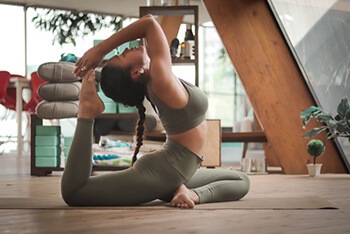
Most modern sessions on yoga tend to focus mainly on your breathing, core strength, and flexibility. The movements tend to be simpler, slower, and lower in intensity than other exercises—but it’s not easy by any means. If you’re not gasping desperately for air at the end of a yoga sesh, you’ve done something wrong.
The various yoga styles differ in their purpose and intensity. Each of them is designed for a certain class of people, some beginner-focused, while some are for the advanced yogis. On the other hand, some styles may have more of a spiritual impact than physical, and vice versa. It’s important to start by assessing your level of physical fitness and choose a yoga class that suits you best in every way.
Now that you know the yoga essentials, let’s get into the miraculous healthcare potential locked within this practice. Here are 7 of yoga’ most powerful health benefits.
1. Burns fat
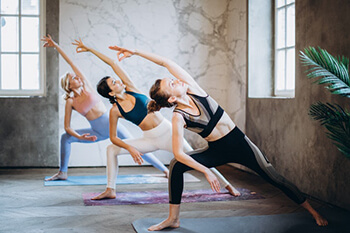
Most people think of yoga as a relatively easy physical workout that can’t help you lose weight, since there’s no running or jumping involved. That’s far from the truth, though. Yoga is, in fact, one of the best exercises you can perform if you’re aiming to lose weight, as it speeds up your metabolism.
Thanks to the strengthening and stimulating effect it has on your endocrine organs, yoga can keep fueling your metabolism to burn strong. This means, even long after you’re done with your yoga session, the body will continue to burn calories—even as you rest!
For instance, the ‘extended side angle’ yoga pose is especially good for weight loss, as the twisting element of the pose massages your abdominal and endocrine muscles, stimulating your metabolism to work. To perform it, put your left foot forwards to get into a lunge pose, then place your left arm on the floor, and looking up, lift your right arm into the air. Hold the pose for as long as you can, then repeat it on the opposite side.
2. Improves the body’s blood flow
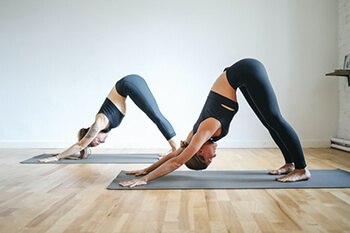
People struggling with poor blood circulation issues can especially benefit from yoga. It’s a simple way to stimulate a faster rate of blood flow around the body. According to experts, a daily yoga routine can significantly improve blood circulation, as the different movements in various yoga poses can help supply more oxygen to the cells, helping them function more effectively.
That’s especially true for poses that involve lots of twisting and turning, supplying the organs with more freshly oxygenated blood. Similarly, inversion poses help reverse blood flow to the brain and heart from the lower parts of the body.
For instance, the downward dog pose is especially useful for regulating blood circulation, since it puts your hips above your heart and your heart above the head. This lets gravity assist in sending blood flow to the brain. Not just that, but this pose also helps strengthen your legs and glutes.
To get into the pose, start with your knees and hands on the floor, with knees aligned right under the hips. Slowly transition your weight from your knees to your feet, and press up with your hands, letting your hips push upwards. Hold it for about half a minute, flexing each leg from time to time to keep the muscles fully engaged.
3. Increases flexibility
As a yoga beginner, it’s normal to struggle with your form in many major yoga positions. That’s mostly because of a lack of flexibility, especially if you’re older. The only way to regain your youthful flexibility is to consistently practice yoga moves and push yourself marginally harder and harder every session. If your joints and muscles are tight and tense, you’ll find it harder to perform even the simplest daily activities. Therefore, it’s important to work on maintaining your flexibility—and what better way to do that than yoga?
Many yoga poses are particularly designed with the purpose of improving your flexibility. For example, the standing forward fold is an easy yoga pose that helps you with this. Simply plant your feet on the floor and bend forward, as if you’re trying to touch your nose to your knees. You probably won’t get there in your first several tries, but try it daily and you’ll considerably improve the flexibility around your back joints and leg.
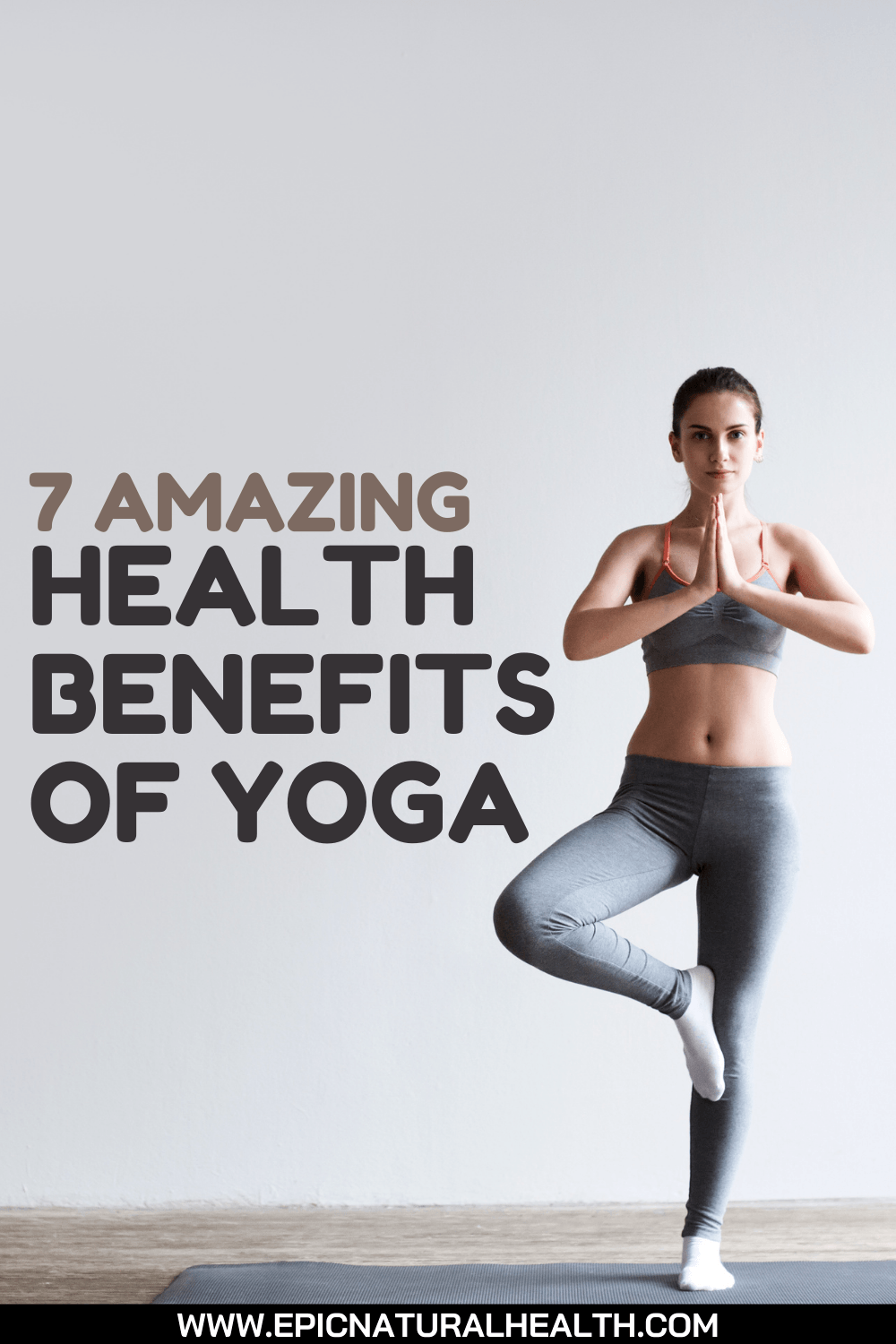
4. Improves muscle tone and strength
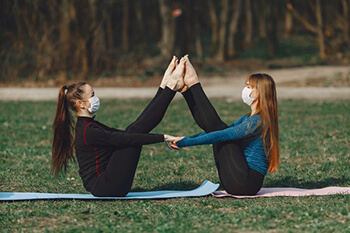
The gym isn’t the only place to work on stronger and better-looking muscles. There’s a more fun way to accomplish that—yoga!
Weight training generally focuses on one muscle group at a time, while yoga can make a whole set of muscles work during the same session; especially involving the muscles in your stomach, back, arms, neck, legs, and feet. With yoga, you’re using your own body weight to achieve your muscle strength and toning goals—which means there’s a much lower risk of injury.
The boat pose is one of the best examples of improving muscle tone and strength with yoga. It involves keeping your arms by your sides while sitting down, and your feet planted flat on the ground as you bend your legs in front.
In this seat position, slowly lean back lift your legs on the floor, raising the toes to diagonally point at a 45-degree angle in front of you. When you’re set, move the arms away from the ground and lean back as you feel your abs work. Remember to keep your back straight during this exercise.
- Extra thick, cushy floor mat in Black for yoga, gym, and everyday exercise
- 1/2 inch thickness offers comfortable padded support and shock absorption; textured surface provides extra traction
- Durable foam construction offers stretchability and springs back into shape
- Elastic strap for secure rolled-up mat storage and easy over-the-shoulder carrying
- 🌿【comfortable support】: Discover enhanced comfort during your yoga practice with Trideer Yoga Block. Crafted from premium foam, these versatile accessories provide the perfect blend of softness and stability, ensuring optimal support for your body.
- 🌿【Injury Prevention】: Yoga blocks are designed to reduce the risk of strain or injury by offering a reliable foundation for various poses and stretches. The foam material gently cushions your body, allowing you to maintain proper alignment and stability throughout your practice.
- 🌿【Versatile Workout Aid】: Whether you're a beginner or an experienced yogi, our foam are an essential tool to elevate your practice. They can be used to deepen stretches, improve flexibility, and increase strength. These lightweight and portable blocks (9"x6"x3")make it easy to incorporate them into any workout routine, both at home or in the studio.
- 🌿【Premium Quality】: Trideer takes pride in delivering high-quality products, and yoga blocks are no exception. Made from durable foam, these blocks are built to withstand regular use and maintain their shape over time. The non-slip surface ensures a secure grip, providing stability and peace of mind during your practice.
- Relax Your Body:The Stretch strap & leg stretcher is perfect for Physical therapy is perfect for stretch foot,waist and hand.Assist stretching after exercise,relieve muscle soreness,improve muscle flexibility,and also improve back pain caused by lack of exercise for a long time.
- High Quality and Durable: The yoga strap made of non-elastic premium nylon,and ensures optimal resistance and great stability, not easy to broken, high strength and toughness. Providing you relax stretching experience.
- Light and Easy to Use: Stretching Strap have 10 loops rope with comfy texture. 75 inch long and 1 inch wide enough to recommended the most beginner to use it, yoga stretches are so easy to work with it even if you've never done them.
- Multi Function: This stretching equipment is very suitable for yoga, pilates, daily exercise or physical therapy, Oak-Sports stretch band can also be used for physical therapy equipment and postoperative recovery.
- ❤️【COMFORTABLE SOCKS】Made of 90% cotton, 10% spandex. Our athletic ankle grip socks provide premium quality combed cotton and 100% silicone gel grips on the bottoml. Soft and breathable, moisture wicking performance keeps your feet dry and comfortable without sweaty feeling. Medium thickness is suitable for all seasons including summer and winter. Machine Washable.
- 🧡【NON-SLIP GRIP DESIGN】Featured by sticky dots on the bottom of the non-slip yoga socks, our anti-skid socks offer better grip on hardwood floors, tile floors, gym floors, or Pilates equipment for improved stability & balance so that you can stay safe, avoid injuries and have better control of your body movements. Grips are made of soft and flexible silicone; they will not crack no matter how much you pull and guarantees a firm grip which allows you to push yourself when it really matters.
- 💛【NOT FIVE TOES SOCKS】Our yoga socks is friendly for women who hate the shackles of five toes socks. Closed-toe fully-covered design, not only easy to wear, but also look fashion. You can use them as a little light slipper for home leisure. You can also use them as thick sock when you put on shoes and go out.
- 💚【MULTI-USAGE】One Size fits Women’s shoe size 5.5-9. No matter what kind of exercise you do, these adult grippy socks for women are perfect for Yoga, Pilates, Bikram, Barre, Ballet, Trampoline, Travel, Studio, Gym, Dance and more. Also ideal for Hospital, Rehab, Physiotherapy, Elderly Care, Pregnancy and more to prevent falls from stairs, or the floor. If you're looking for these socks, you can stop the search and buy our 4 pack, we are confident that you will love these non slip socks.
5. Calms the nervous system and reduces stress
Yoga benefits aren’t limited to your physical wellness. After all, it’s primarily known as a popular ‘relaxation’ exercise and technique, which means it’s great for your mental health as well.
Just like any other physical exercise, yoga can help reduce anxiety and stress levels. It does this by releasing endorphins—the natural ‘happiness’ hormone. The breathing techniques and stretching incorporated into yoga can also relieve stress. Breathing calms your mind while stretching releases stored-up tension in your muscles.
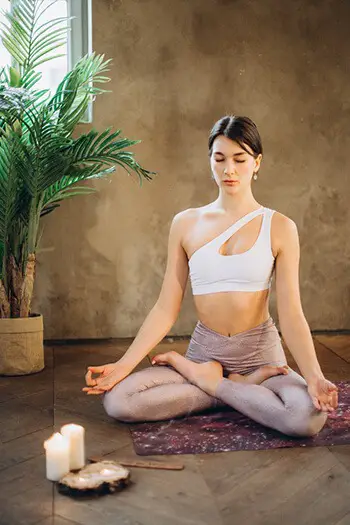
Many yoga practices focus on the meditation, breathing, and mindfulness component of yoga, which is the right approach if you’re looking to reduce your stress levels through yoga. If that’s the case, try the ‘easy pose’. Crossing your legs as you sit down, inhale and exhale deeply five times, then lift yourself back up again.
6. Improves your sleep
If you struggle to sleep well at night, yoga might be exactly what you’re looking for. While yoga is best known for results related to strength, relaxation, and flexibility, it can also be used to improve your sleep quality.
According to studies, insomniacs fall asleep faster and longer if they practice yoga on daily basis. If they wake up during the night, they also tend to fall back asleep faster—all thanks to a consistent habit of yoga. Moreover, yoga has been found to help older people and pregnant ladies sleep better at night.
If you’d like to try some yoga moves that are known for improving your sleep, the wide-knee child’s pose is a good place to start. It’s a simple move that you’ll be able to master in your first few tries. Even if you don’t find the time to carry out a full-blown yoga sesh, try and practice this move before bedtime to help you fall asleep quicker and deeper.
Start by kneeling on the floor with your feet behind you. Make sure your knees are one hip-width apart and let yourself sink forward, keeping your arms tucked back. If you can, rest your nose on your thighs, and hold the pose for as long as you comfortably can.
7. Boosts the immune system
No one likes catching coughs or colds, and the best tool you have against them is your immune system. It’s essential to keep your immune system fine-tuned to perform optimally at all times, especially during a global pandemic! Yoga has also got this part covered, as it lowers the stress hormones that generally compromise the immune system’s functioning. Yoga also conditions your respiratory tract and lungs, which again, is incredibly valuable during a global respiratory outbreak.
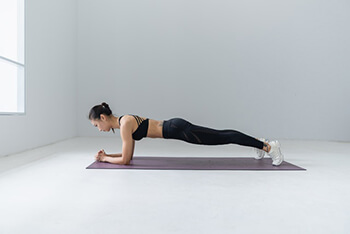
According to some studies, yoga can also eliminate the body’s toxins by stimulating the lymphatic system. Certain poses encourage oxygenated blood flow to vital organs, ensuring peak performance.
Like many other purposes mentioned above, there are specific poses designed to improve your immune system functioning. If you’re the type of person who gets sick quite often, you’ll want to try some of these.
For starters, try the ‘plank pose’ to help stimulate several important systems associated with the immune system, such as your nervous and digestive systems. Get down to your hands and knees, with your hands planted directly under your shoulders, and step your feet back. Firm up your thighs and align your core by drawing your belly up toward the spine. Hold this position for at least 60 to 90 seconds before relaxing back onto your knees and hands.
Conclusion
There are countless reasons to start practicing yoga regularly as a fitness hobby. Not only is it great for health, but also makes for quite a fun pastime activity—especially if you do it with friends or family.
If you’ve never exercised much in your life but want to give yoga a go, it’s best to take things slowly. Yoga demands flexibility and most of us don’t have it initially, and that’s fine. With time, consistency in your yoga habit will move you quickly toward achieving your flexibility, fitness, and even weight loss goals. Additionally, your form can be quite challenging to master, so give yourself some time and work on your poses every day.

Yoga can be practiced in a variety of ways; whether you’re alone and copying a tutorial video, or enrolled in yoga classes with an instructor. This form of exercise has grown so popular that ‘yoga retreats’ are becoming more and more common as specialized holiday packages that incorporate yoga as a relaxation and fitness activity in gorgeous vacation destinations. No matter how you choose to take up this activity, carrying it out consistently will certainly help to boost your mental and physical wellness.
One final tip: Always try to increase your yoga prowess with each session you put in to make sure you get the most out of your effort. All the best!





